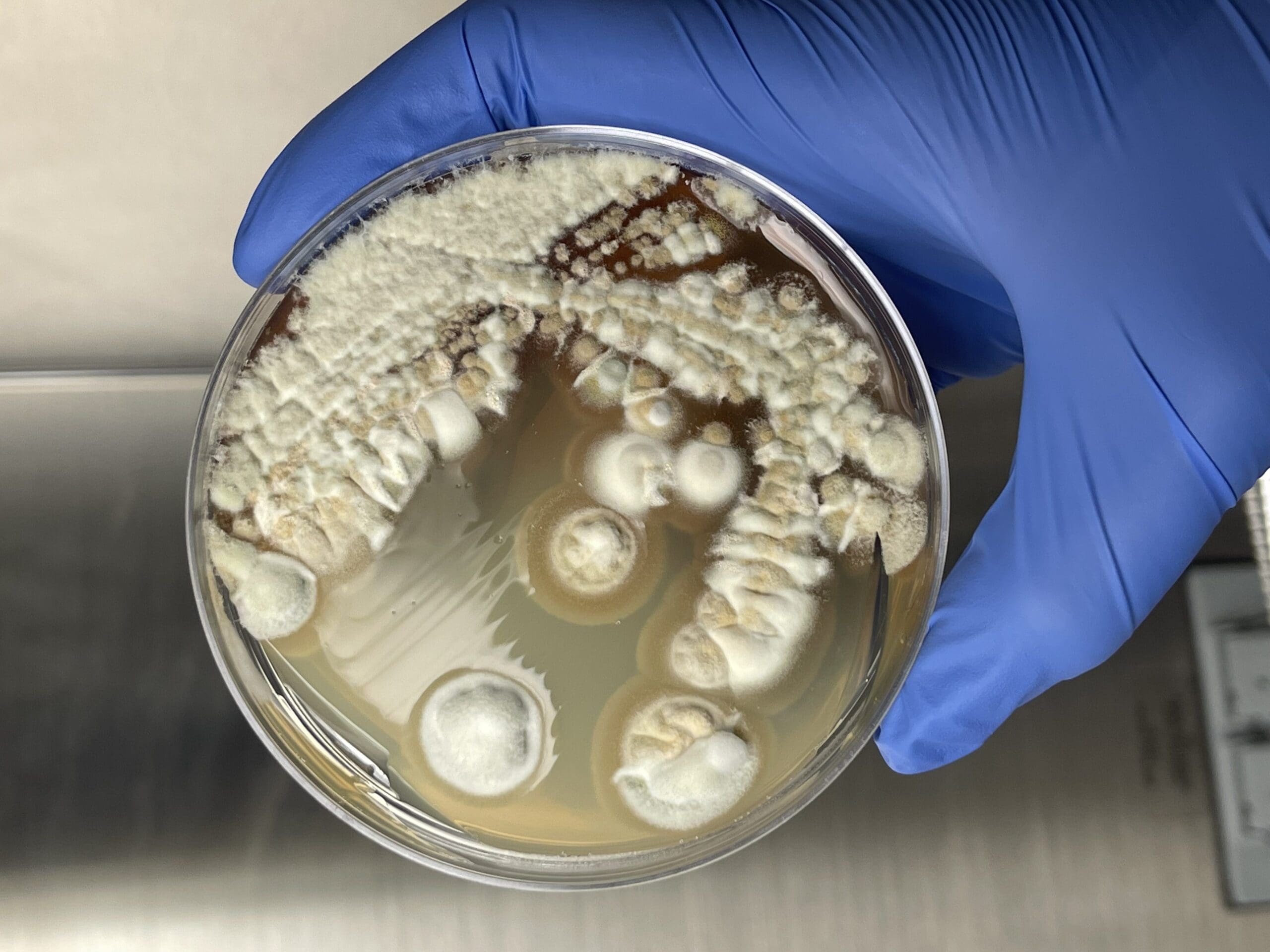
Get A Testing Quote
Aspergillus versicolor
STRUCTURE AND PHYSIOLOGY
Aspergillus versicolor is a slow-growing filamentous fungus found in damp indoor environments and on food products. Colonies can vary greatly in color, starting as white and changing to yellow, orange, and green with pink or flesh hues intermixed as they mature. A. versicolor can grow in very low water conditions and is particularly resistant to alkaline conditions.
TRANSMISSION AND DISEASE
Aspergillus versicolor is an opportunistic pathogen and a cause of aspergillosis. A. versicolor like other Aspergillus species, is an ear, nose and throat irritant. It colonizes air-conditioning equipment and is present in carpet dust. Toxins produced by Aspergillus versicolor can cause diarrhea and upset stomach.
DISINFECTION
The best way to deal with Aspergillus versicolor spread is prevention. This includes reducing moisture and humidity. Professional mold removal services are the safest and most effective way to remove Aspergillus versicolor.
INTERESTING FACTS
Aspergillus versicolor is very effective at quickly removing lead ions making it an environmentally-friendly method of removing harmful waste products from industrial facilities. A. versicolor was found on the Mir space station, surviving both the launch and the descent from space.
REFERENCE(S)
Piontek M, Łuszczyńska K, Lechów H. Occurrence of the Toxin-Producing Aspergillus versicolor Tiraboschi in Residential Buildings. Int J Environ Res Public Health. 2016;13(9):862. Published 2016 Aug 31. doi:10.3390/ijerph13090862
Aspergillus versicolor | Department of Environmental Health & Safety (DEHS) (umn.edu)
Aspergillus versicolor – Health Symptoms & Treatment | Mold Busters (bustmold.com)
Makimura K, Hanazawa R, Takatori K, Tamura Y, Fujisaki R, Nishiyama Y, Abe S, Uchida K, Kawamura Y, Ezaki T, Yamaguchi H (2001). Fungal flora on board the Mir-Space Station, identification by morphological features and ribosomal DNA sequences. Microbiol Immunol. 45(5):357-63.
Share

